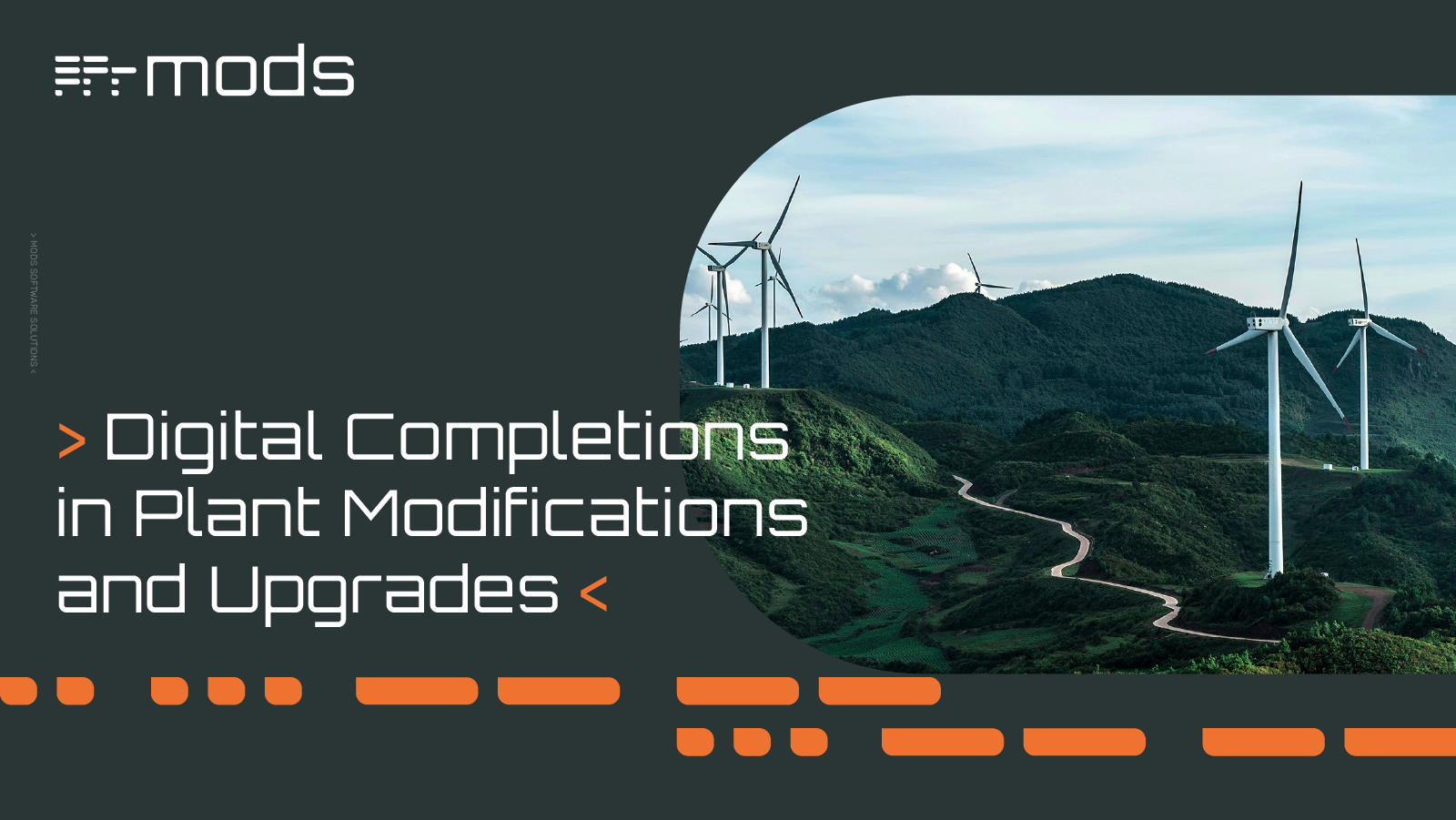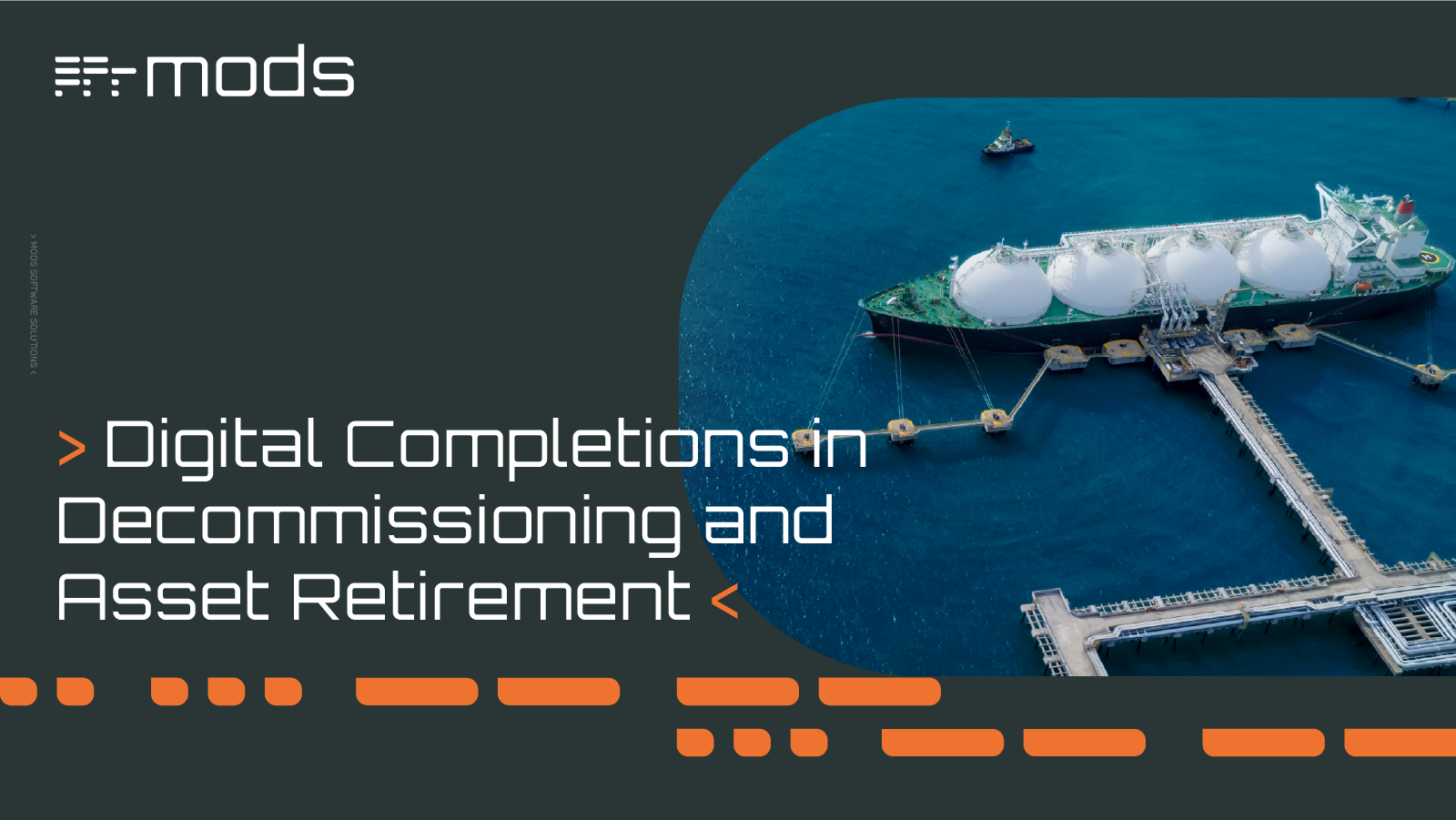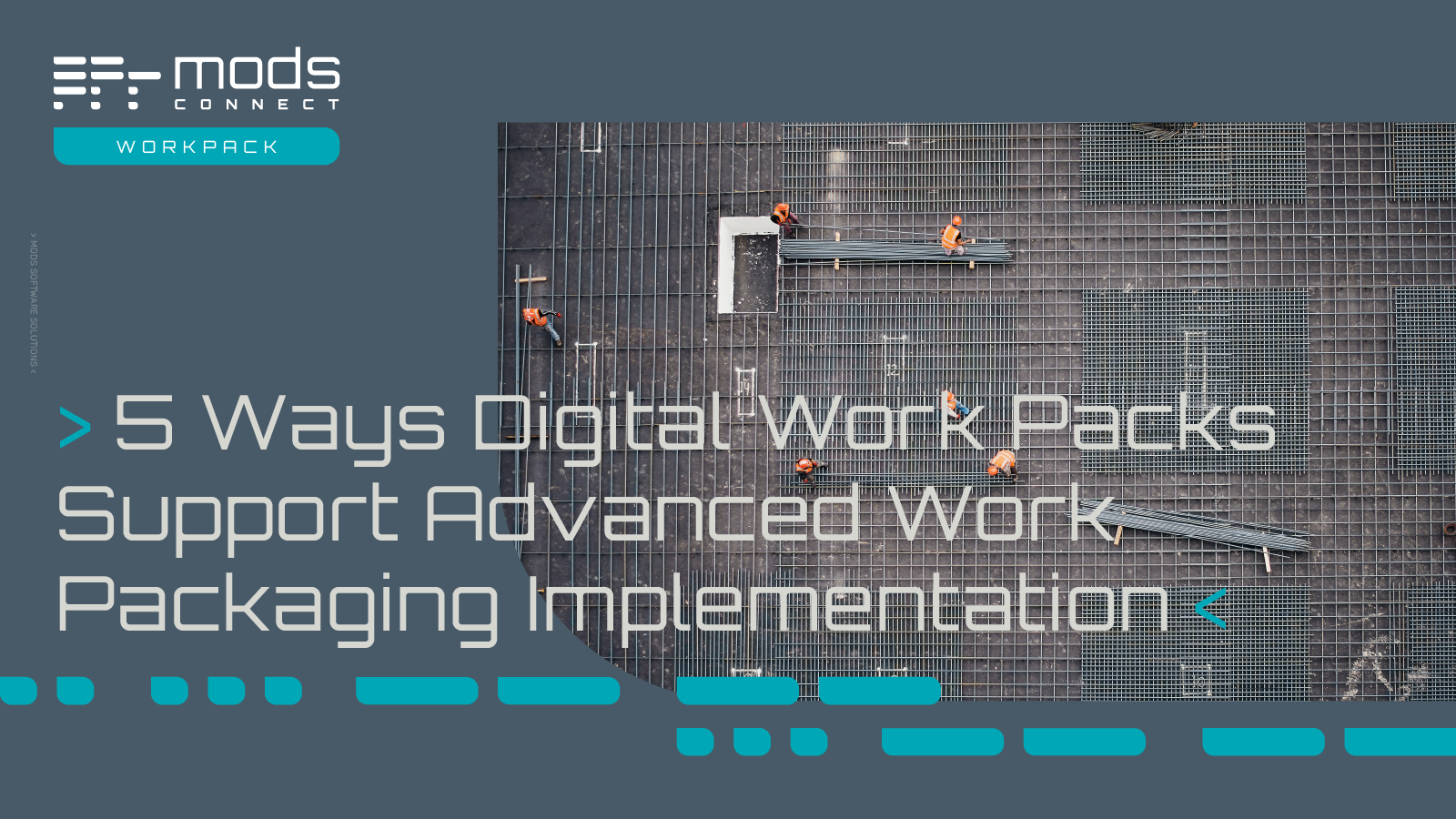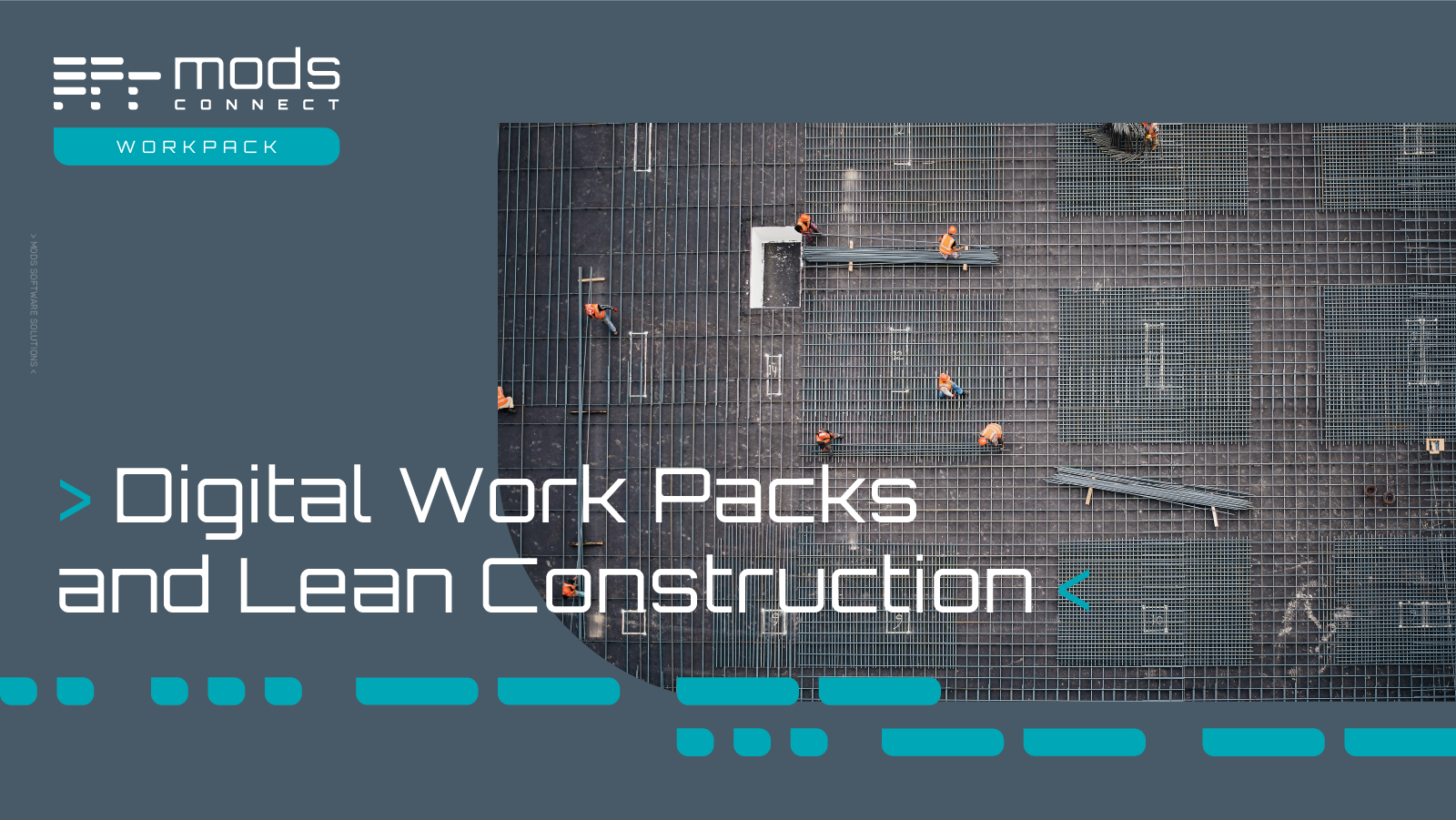Digital Completions in Plant Modifications and Upgrades
Unlike greenfield or any new build construction projects, plant modifications and upgrades present a unique set of challenges. Work is carried out...
3 min read
 Lisa De Vellis, PE
:
Nov 19, 2024 10:59:57 AM
Lisa De Vellis, PE
:
Nov 19, 2024 10:59:57 AM

We’ve talked a lot about digital work packages (DWPs). Same goes for Advanced Work Packaging (AWP). DWPs are an efficiency-enhancing tool and AWP is an efficiency-seeking methodology, making them compatible and mutually reinforcing.
As a construction project progresses, information (data, when digital) accumulates. Even when used in data-poor environments such as brownfield projects, DWPs such as MODS Connect WorkPack stockpile data throughout the project. It is this accumulation of data that, when properly structured and managed, empowers AWP.
But, what tips the balance from DWP workflow efficiency to AWP project-delivery efficiency? The answer lies in the data: project information that grows with every DWP issuance. AWP more holistically utilizes project information, enabling constraint-free planning and strategic alignment of construction and engineering. Understanding what sets AWP implementation apart from using a DWP tool, for example, is one way to look at the digital transformation (DX) of industrial construction and maintenance projects.
This blog discusses some ways to leverage an off-the-shelf digital work package tool such as MODS Connect WorkPack to kickstart an impactful AWP-led digital transformation for superior project delivery.
A digital work package tool like MODS Connect WorkPack software is plug-and-play ready. It needn’t a forethought before use as information can be inputted in to kickstart the preparation of work packages in the same manner as with traditional paper systems. AWP, on the other hand, mandates a proactive approach to planning. Integrating engineering, procurement and construction functions early on in the project lifecycle ensures that decisions made in one phase do not adversely impact subsequent phases, which can happen when considering work packages in isolation.
While DWPs streamline workflows and processes, reducing resource waste (both time and material), AWP emphasizes front-end planning to minimize project risks, as issues are identified early and are addressed before they escalate. AWP’s end-to-start approach demands a unified strategy from the outset. This requires data, which DWPs can help amass.
DWPs focus on creating work packages for specific tasks or activities. And AWP structures the entire project lifecycle into increasingly small bite-sized components. This division allows for more comprehensive planning and ensures that work progresses logically. It also generates enormous amounts of data that need to be stored and managed. MODS software onboards and stores that data, opening up the potential for more exciting, productivity-enhancing, AWP-supporting technological advancements.
By using AWP, construction teams are equipped with the information they need at every stage of the project. This strategic breakdown enhances productivity, as tasks can be executed more efficiently with fewer interruptions caused by missing materials or incomplete designs. Without a DWP tool, satisfying this essential element of AWP becomes an impossible task.
DWPs offer a phenomenal starting point for digitally immature project teams to deliver efficiency, structure and control. As project complexity increases, however, a more robust digital and methodological solution is needed. Ironically, brownfield projects typically lack digital maturity, while also being a notoriously complex environment.
Dipping the team’s toes into software solutions like digital work packages is an ideal starting point to unleash the potential for digital transformation, enabling AWP implementation on all projects – including brownfield.
The successful use of DWPs can be a granular first step to improving project performance. But, on their own, they only go so far. The interdependencies between different work streams can quickly lead to confusion without proper orchestration, which is where AWP excels. AWP coordinates multiple work streams by providing detailed, executable packages for each phase of construction. The added efficiency and improved coordination allow even the most challenging brownfield projects to stay on track, reducing the risk of overruns and delays.
Digital work package software lends visibility to the detail and progression of installation workflows. And AWP enables enhanced visibility throughout every project phase. DWPs and AWP focus on shorter term tasks and longer-term view of the construction timeline, respectively. When AWP is supported by, for example, MODS Connect WorkPack, the foresight enables better resource planning and more accurate scheduling.
For project managers overseeing complex projects with multiple interrelated tasks, AWP provides superior control. The constant tracking and monitoring capabilities built into AWP tools give managers the ability to quickly pivot when issues arise, ensuring that the project stays on course.
AWP aligns well with Lean construction principles, which aim to minimize waste and maximize value. By reducing waiting times and ensuring materials and resources are where they need to be when they are needed, AWP helps teams work more efficiently and avoid unnecessary delays. Digital work packages are a necessary component of this.
For starters, the mere shipping of hard-copy work packages is wasteful from time, transport and financial perspectives. Further, DWPs reduce unnecessary administrative time spent searching for information, as well as align with materials management systems, for example, to ensure that workflows are as streamlined as possible. AWP is very much in alignment with Lean construction – and both need to leverage digital tools such as DWPs to optimize productivity and reduce operational waste.
While digital work packages offer significant improvements over traditional construction methods, AWP takes these efficiencies to the next level, particularly in the most challenging projects, including those in the brownfield space. The balance tips toward AWP when early planning, long-term coordination and comprehensive project oversight are needed. To improve project execution, reduce delays and maximize efficiency, adopting AWP (which requires leveraging digital tools such as DWPs) is a strategic decision that can yield substantial benefits.
Want to see how this can work in action? Join our webinar.

Unlike greenfield or any new build construction projects, plant modifications and upgrades present a unique set of challenges. Work is carried out...

Turnarounds and shutdowns are among the most critical—and stressful—phases in the management and operation of industrial assets. These planned...

Offshore decommissioning and asset retirement present significant logistical, regulatory, safety, fiscal and reputational challenges. The process of...

Advanced Work Packaging (AWP) is a construction execution methodology that, in part, relies on the effective use of installation work packs (IWPs)....

Digital work packages (DWPs) mitigate an obvious waste of time and resources in remote industrial construction projects, such as offshore maintenance...

Efficiency and optimization are the hallmarks of Lean construction. The role of digital infrastructure cannot be overstated as an essential tool in...